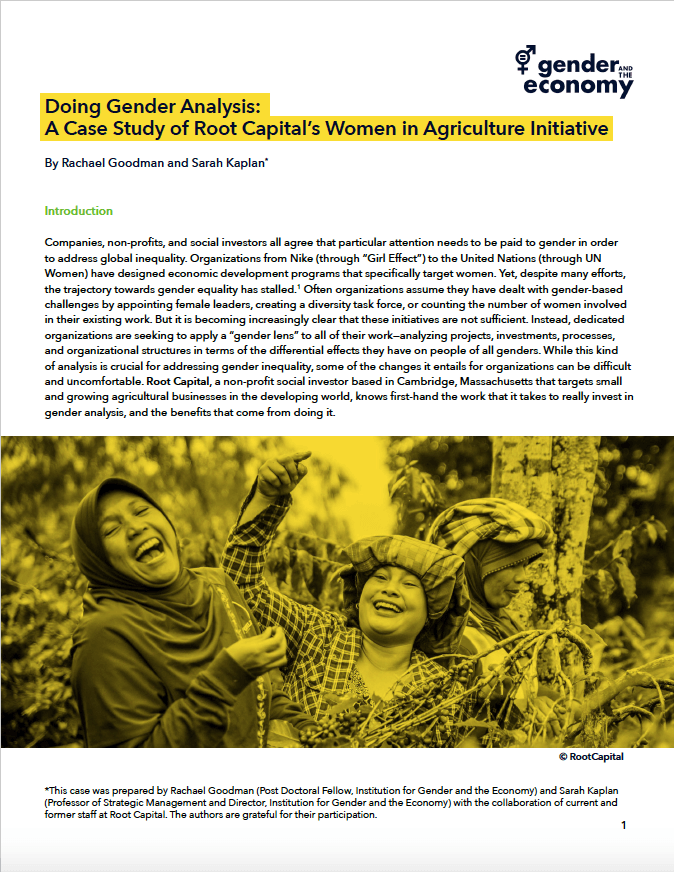Overview
Written by Rachael Goodman and Sarah Kaplan, Institute for Gender and the Economy
Root Capital is a social enterprise that invests in agricultural businesses in developing economies to bring them into the formal economy and develop their capabilities. This case study focuses specifically on Root Capital’s Women in Agriculture Initiative in order to examine how a gender analysis of their activities improved their impact. It provides clear examples of gender analysis at work, how it is done and the organizational implications of doing it.
This case would be useful for those interested in or teaching courses in:
- Gender analysis in the business context
- Social enterprise
- Economic development
- Agricultural economics
- Social impact
- Women’s empowerment
Introduction
Companies, non-profits, and social investors all agree that particular attention needs to be paid to gender in order to address global inequality. Organizations from Nike (through “Girl Effect”) to the United Nations (through UN Women) have designed economic development programs that specifically target women. Yet, despite many efforts, the trajectory towards gender equality has stalled. Often organizations assume they have dealt with gender-based challenges by appointing female leaders, creating a diversity task force, or counting the number of women involved in their existing work. But it is becoming increasingly clear that these initiatives are not sufficient. Instead, dedicated organizations are seeking to apply a “gender lens” to all of their work—analyzing projects, investments, processes, and organizational structures in terms of the differential effects they have on people of all genders. While this kind of analysis is crucial for addressing gender inequality, some of the changes it entails for organizations can be difficult and uncomfortable. Root Capital, a non-profit social investor based in Cambridge, Massachusetts that targets small and growing agricultural businesses in the developing world, knows first-hand the work that it takes to really invest in gender analysis, and the benefits that come from doing it.





